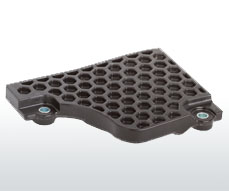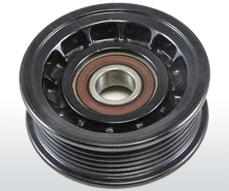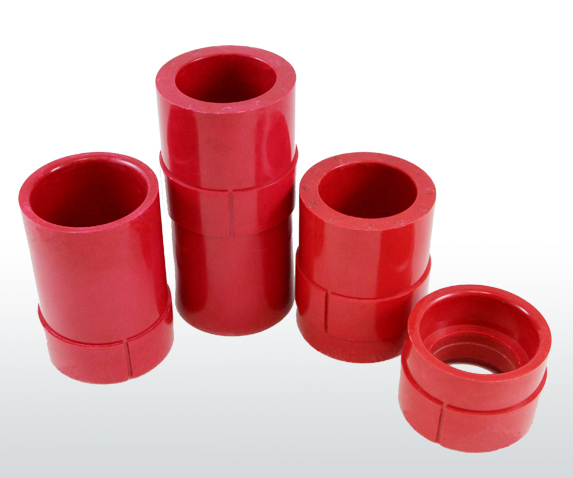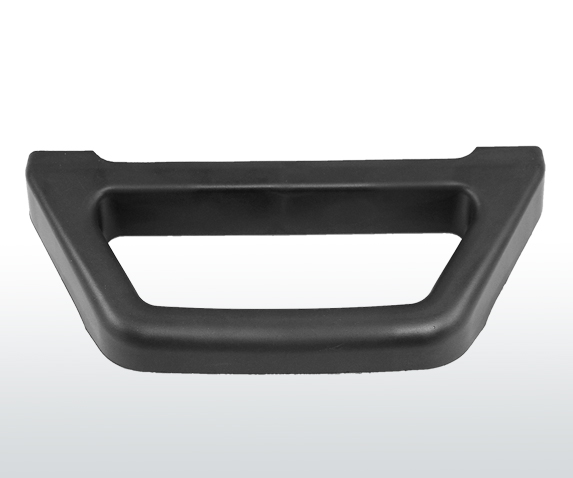Metal-to-Thermoset Conversions
As engineers and product designers continue to try and maximize efficiency and minimize costs in existing or new product applications, thermoset composites are increasingly becoming a material conversion option for performance-sensitive, price-conscious applications that have traditionally been manufactured in metallic materials. Whether converting for cost, performance, or commercial reasons, thermoset composites are allowing engineers to “do more with less” within new and existing product applications.
Why Switch From a Metal to a Thermoset?
Engineers and product designers commonly switch from using metals to thermoset composites in applications for a variety of reasons, depending on the application. Thermosets offer the moldability of plastics in that they can be molded in a variety of complex geometrical shapes. Whereas metal product applications may require costly secondary machining, lapping, or honing operations to finish a part; thermosets may be molded to tolerances of +/-.005”. In addition to saving on secondary operations, utilizing thermosets in a product design can consolidate multiple parts of an assembly, as well as lower part weight over metal components and assemblies.
Material Performance:
Thermosets offer the moldability of engineered thermoplastics (Nylon, ABS, Polypropylene), but with added material performance heat resistance up to 500F°, depending on the material formulation. Thermosets are also UV & corrosion resistant, making them suitable for outdoor environments and applications exposed to excessive moisture or fluids.
In electrical applications, thermoset composites offer high dielectric strength and insulation performance, low arc & track, and some thermosets are UL V0 or 5VA rated for flammability resistance.

Cost Advantages:
Utilizing thermoset molding vs. metal casting for your product application can eliminate or significantly reduce secondary operations such as machining and painting. Thermosets may be molded to any surface finish or color, presenting the materials to consumer appliance applications such as covers, bases, and handles that require performance and an aesthetic look.
While tooling costs for thermoset injection molding may be higher up front than tooling for cast metals, the tooling longevity or life expectancy for thermosets can reach over 1,000,000 cycles, positioning thermosets as a cost-effective material option for high-volume program applications.
Common Applications using Metal-to-Thermoset Conversions:
Automotive:
Under-the-hood and powertrain/transmission applications have converted metal components to thermoset to take advantage of thermosets’ resistance to high temperatures and automotive fluids. Automotive OEMs and suppliers have converted prior metal applications to thermoset such as thrust washers, pulleys, pump housings, oil pans, valves, & covers. With the impact of electrification and hybrid/electric vehicles, the automotive industry is researching & implementing thermoset materials into electrical sensors, battery housings, electric motors, circuit breakers and more.
Larger automotive applications such as hoods, trims, truck beds, and body panels are continuing to explore thermosets to continue lightweighting efforts and increase fuel efficiency of vehicles.
Electrical & Lighting:
Electrical and lighting applications have traditionally been using thermosets for quite some time due to thermosets’ excellent electrical performance and heat resistant properties; however larger, more complex electrical & lighting applications are converting from metal-to-thermoset including electrical sensor and LED lighting housings. Other electrical applications such as circuit breakers, electrical motor housings, bobbins, switches and relays, and terminal blocks still rely on thermosets to keep piece part costs down while still providing insulation and dielectric strength.
Appliance:
Over the past decade, Woodland has seen consumer-appliance OEMs transitioning from metals to thermoset composites on a variety of product applications to lower costs without sacrificing product durability. Home appliance manufacturers are using thermosets within appliance bases, covers, lids, and trims to keep part and assembly weight down, while taking advantage of thermosets’ heat resistant properties. Outdoor grill handles and knobs made from thermosets are UV and corrosion resistant, giving OEMs and suppliers a product that looks and performs as good as new throughout its life cycle. Instead of spending dollars on costly secondary finishing and painting operations, consumer appliance OEMs can utilize thermosets’ molded-in color and surface finish to reduce overall manufacturing costs while keeping a highly aesthetic look.
Manufacturers in the HVAC and outdoor grill industry have been utilizing thermosets into product designs for a list of material benefits, including heat resistance, moisture & corrosion resistance, moldability, and safety reasons where a metal component may have sharp edges, thermoset parts can be designed with a radius to ensure safe handling and installation. Additionally, thermosets are perfectly suitable for outdoor weather conditions ranging from sub-freezing temperatures of Alaskan winters (-40F°) to hot summers in the Arizona desert.
Industrial & Energy:
Compared to the automotive and electrical industries, the industrial and energy sectors have generally been a late adapter in implementing thermosets within product designs, however new and expanded markets are changing that. As oil prices have stabilized after the recession, manufacturers of oil and gas equipment are relying on the robust material properties of thermosets in downhole applications such as frac plugs, frac balls, centralizers, and valve components.
Wind turbines are becoming more common place in the US, and internal components such as brush holders, slips rings, and circuit breakers are being manufactured from thermoset composites for their electrical insulation and heat deflection properties.
The power distribution market is becoming an accelerated user of thermosets to lightweight sensor housings previously produced from metals. Thermoset sensor housings offer electrical performance and strong insulation to house powerful PCB boards and supercapacitors that send electrical signals, while drastically reducing the weight of the housing assemblies. Some sensor housings must be resistant to weather conditions, including corrosion, UV, or underground fluid run-off such as salts, chemicals, and rain water.





